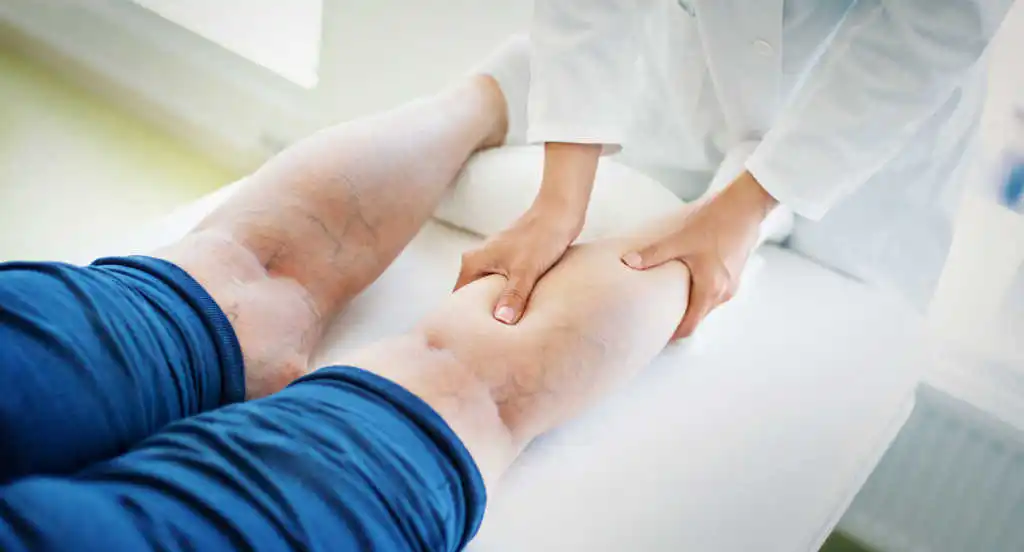It is applied in cases where blood flow is blocked due to narrowing of the veins in the legs. Leg vein occlusion surgeryIt aims to open the vessels or remove blockages. It is usually performed through endovascular interventions or open surgical techniques.
Its purpose is to reduce pain by restoring adequate blood flow. In addition, it is to prevent tissue damage and restore mobility. The procedure can be performed with different techniques depending on the patient's condition.
İçindekiler Tablosu
In Which Situations Is Leg Vascular Occlusion Surgery Performed?
It is applied if there are symptoms such as severe pain in the legs, difficulty in walking or pain during rest. It may be considered if symptoms seriously affect quality of life. If tissue death occurs in the area, this may require urgent surgical intervention. Gangrene is a serious condition that can lead to loss of legs or feet.
It is applied if drug treatments, exercise programs, and endovascular interventions cannot correct the problem. In cases where these methods do not relieve symptoms, surgical intervention may be considered. It is required if there is a blockage in the aorto-iliac arteries, one of the large arteries that carry blood to the legs. Organs or tissue areas may become vital due to blockage.
In such cases, surgery may be required. Leg vein occlusion surgery The type and appropriate treatment options may vary depending on the patient's condition and the location of the blockage. It is important to consult a specialist about the problem and determine the most appropriate treatment option.
Stages of Leg Vascular Occlusion Surgery

The first step is to determine the severity of the disease and diagnose it. It is performed using methods such as physical examination, medical imaging methods and blood tests. During the preoperative period, the patient's medical history and current medications are reviewed.
The patient's condition is evaluated before surgical intervention and discussed with the anesthesiologist. It is decided how the operation will be performed. General anesthesia or local anesthesia is usually used during surgery.
The anesthesiologist determines the most appropriate type of anesthesia. During surgical intervention, access to the blocked vein is provided. This may differ depending on where the vein is on or below the leg.
Different techniques can be used to open the vein. Methods such as balloon angioplasty, stent placement, or sometimes surgical removal of the blocked section are used. Once the blockage is resolved, adjustments are made as necessary to restore normal blood flow to the vessel.
When the procedure is completed, the surgical area is cleaned and bleeding is controlled. Surgical openings are closed with stitches or other closure methods are used. The patient may need to be monitored for a while in the postoperative period. The healing process may differ from person to person.
Appropriate precautions are taken to manage the patient's pain and reduce the risk of infection. Physical therapy programs help the patient strengthen their leg muscles. It may also help him regain his walking skills. Since each patient's situation is different, leg vein occlusion surgery The process is planned and implemented individually.
Things to Consider After Leg Vascular Occlusion Surgery

Strictly follow the instructions given by your doctor for the post-operative care process. Take your medications regularly and attend your appointments regularly. Wound care is very important. Perform wound care as recommended by your doctor to ensure the wound remains clean and dry.
A healthy nutrition program can speed up your recovery process. Create a proper diet plan and seek help from a nutritionist if necessary. It is important to move after surgery. However, you should perform these movements as and at the level recommended by your doctor.
Walking or exercising slowly can improve circulation. Smoking and alcohol use can negatively affect the healing process. If possible, do not smoke and limit or avoid alcohol consumption altogether. If you have diabetes, it is important to keep your blood sugar at the level recommended by your doctor.
Use your insulin or medications regularly and pay attention to your diet. You should go to regular check-up appointments in the post-operative period. Checkups are important to monitor your recovery progress. It is also important to detect possible complications early. If you are overweight, it is important to lose weight.
By aiming for ideal body weight, you can improve your circulatory health. If you have certain conditions (for example, blood clotting disorders), use caution. Take necessary precautions to minimize risks. After leg vascular occlusion surgery There are things to pay attention to. These may vary depending on the person's health condition and the type of surgery. Therefore, it is very important to follow your doctor's recommendations. If you have any questions or concerns, you should consult your doctor.


